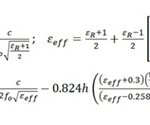The Terms "Nr FR1" and "Nr FR2" Are Associated With The Frequency Ranges Used in 5g (Fifth Generation) Wireless Communication. "NR" Stands for New Radio, The Air Interface and Radio Access Technology Used in 5G. "FR1" and "FR2" Take up Frequency Range 1 and Frequency Range 2, respective. Here's a detailed explanation of the diffrees Between nr fr1 and nr fr2:
- NR FR1 (Frequency Range 1):
- Frequency Bands:
- NR FR1 CLACKASSES FREQUENCY BANDS BELOW 6 GHZ. It includes sub-6 ghz frequency bands, making it followed for providing wide-area coverage and better penetration through obstacles.
- Characteristics:
- Nr fr1 bands are characterized by relatively lower frequencies compared to fr2. These Frequency Bands Offer Good Coverage and Are Well-Suite for Mobile Broadband Services, included Enhanced Mobile Broadband (EMBB) Use Cases.
- Deployment scenarios:
- Nr FR1 is Commonly Deployed in Urban, Suburban, and Rural Areas to Provide Wide-Area Coverage for 5G Services. It is followed for scenarios where extensive coverage and good indoor penetration are essential.
- Typical Frequency Ranges:
- Examples of Frequency Bands in nr Fr1 Include The 600 MHz, 700 MHz, 2.4 GHz, 3.5 GHz, and 4.9 GHz Bands.
- Use boxes:
- NR FR1 is well-suited for use SUCH as mobile broadband, IOT Applications, and scenarios where wide coverage and connectivity readable prioritized.
- Frequency Bands:
- NR FR2 (Frequency Range 2):
- Frequency Bands:
- NR FR2 CLACKASSES FREQUENCY BANDS IN THE Millimeter-Wave (MMWAVE) Range, Typically Above 24 GHz. These Higher Frequencies Allow for Greater Data Capacity Come with Challenges Such as Limited Coverage and Sensitivity to Obstacles.
- Characteristics:
- Nr FR2 Bands Provide Higher Data Rates and Increased Capacity Compared to FR1. However, they are more likely to signal attenuation due to factors like atmospheric absorption and reduced penetration through obstacles.
- Deployment scenarios:
- NR FR2 is followed for deployment in dense urban areas, stadiums, come, and other scenarios where high data rats and capacity are crucial. It is less Commonly deployed in rural or suburban areas due to its limited coverage characteristics.
- Typical Frequency Ranges:
- Examples of Frequency Bands in nr Fr2 Include The 24 GHz, 28 GHz, 39 GHz, and 60 GHz Bands.
- Use boxes:
- NR FR2 is well-suited for use USE CASES Ultra-High Data Rates, Such as Augmented Reality (AR), Virtual Reality (VR), Fixed Wireless Access (FWA), and Applications Demanding Extremely High Throughput.
- Frequency Bands:
- Differences:
- Frequency Range:
- The Primary Difference Between Nr FR1 and Nr FR2 is the Frequency Range They Cover. NR FR1 Includes Sub-6 GHz Bands, While NR FR2 Flags Millimeter-Wave Bands Above 24 GHz.
- Characteristic coverage:
- Nr Fr1 Provids Wider Coverage and Better Penetration Through Obstacles, Making It followed for Wide-Area Deployments, included rural and suburban Areas.
- Nr FR2 Offers Higher Data Rates But Limited Coverage and May Experience Challenges in Penetrating Obstacles, Making It Shared for Dense Urban Sholes and Specific High-Capacity Use Cases.
- Use Focus box:
- Nr FR1 is often Associated with Use Cases where Reliable Coverage and Wide-Area Connectivity Are Crucial, Such As Mobile Broadband and Iot Applications.
- Nr FR2 is geared towards use boxes requesting ultra-high data rats, low latency, and high capacity, included Like AR, VR, and FWA in High-Density Urban Areas.
- Characteristic propagation:
- NR FR1 Better Exhibits Characteristic propagation, included Improved Signal Penetration Through Walls and Buildings.
- Nr FR2 Experiences Higher Atmospheric Absorption and Reduced Penetration Through Obstacles due to the Higher Frequencies Involved.
- Frequency Range:
In Summary, nr Fr1 and nr fr2 Take up different Frequency Ranges Used in 5g, Each Catering to Specific Deployment Scenarios and Use Cases. Nr FR1 Focuses on Wide-area Coverage and Reliabibility, While Nr FR2 Emphasizes Ultra-High Data Rates and Capacity in High-Density Urban Svenholes.
